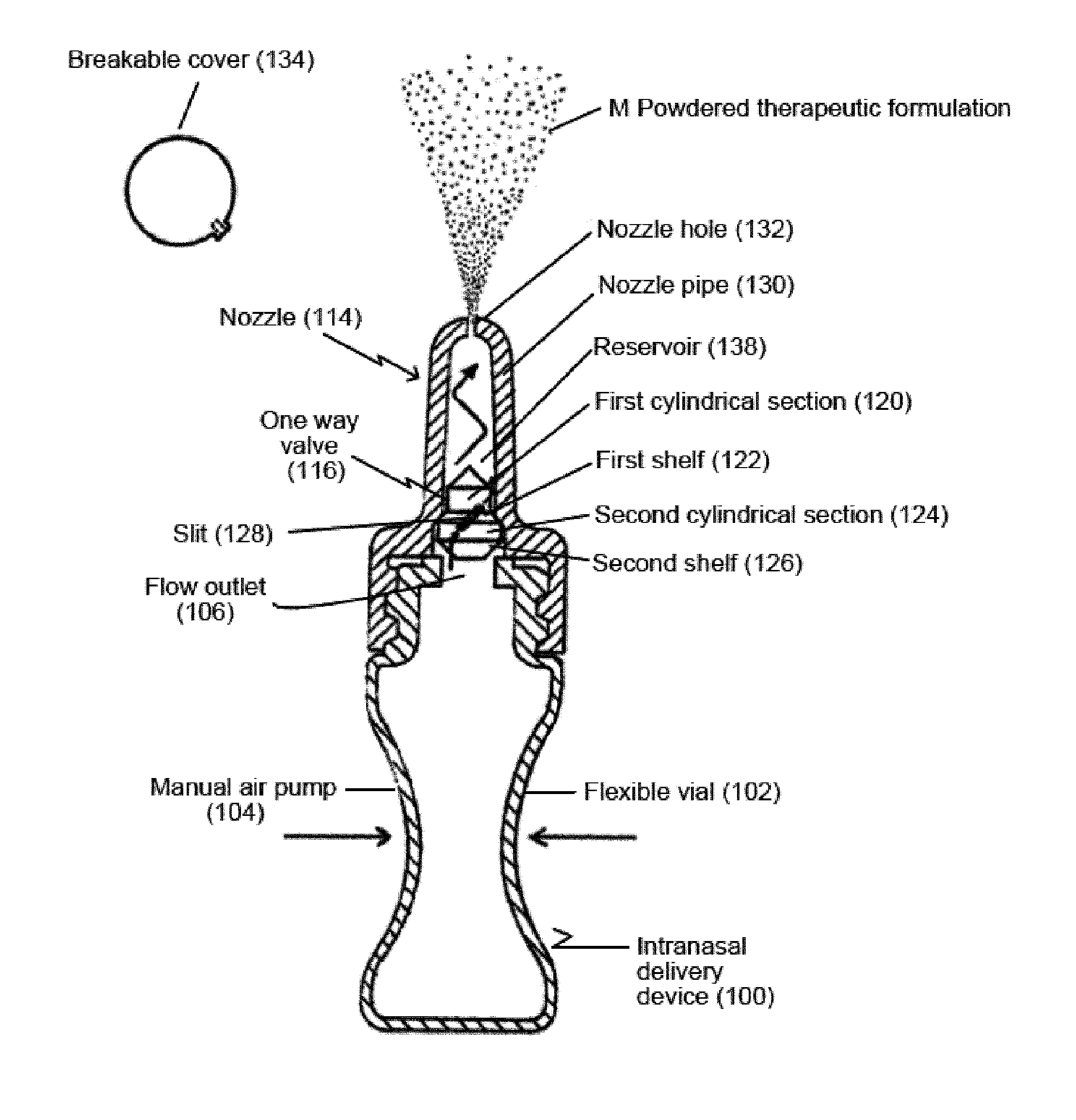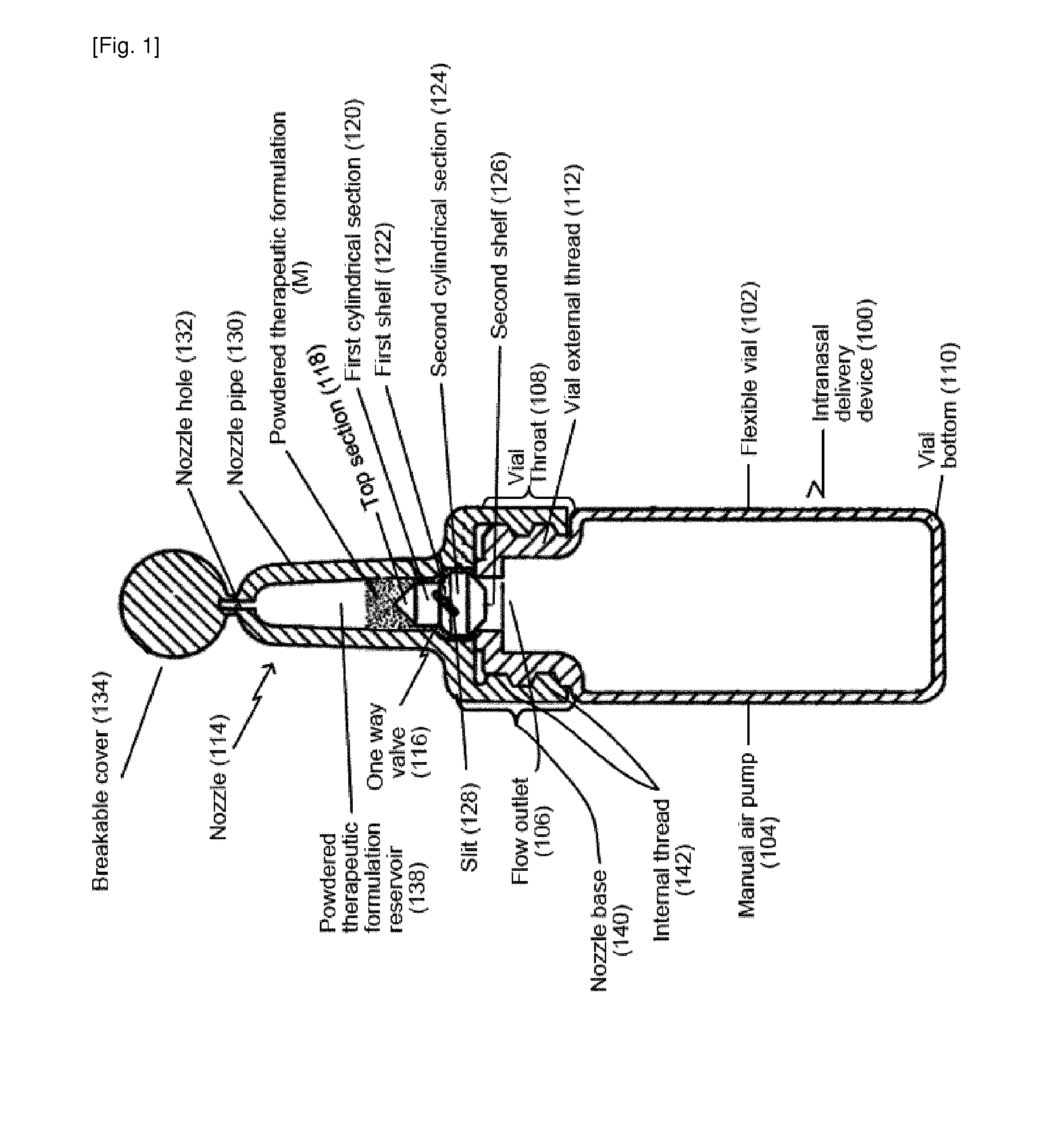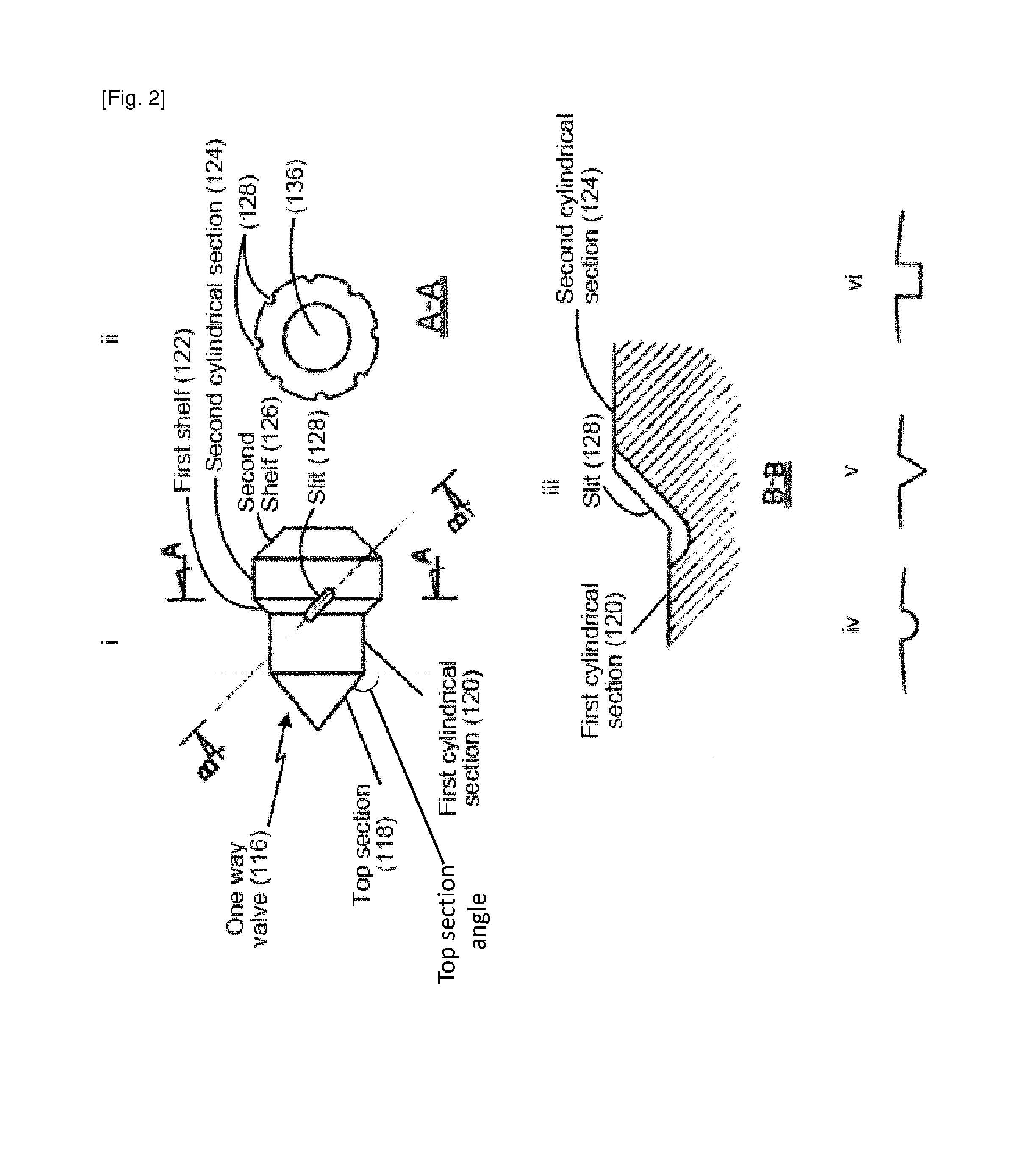Intranasal delivery devices
a technology of intranasal and delivery device, which is applied in the direction of medical insufflators, packaging, other medical devices, etc., can solve the problems of intranasal delivery device awkward to hold or use, inability to deliver substantially all of the dose, and inability to deliver consistent or reproducible doses, etc., to achieve the effect of increasing the delivery of powdered therapeutic formulations
- Summary
- Abstract
- Description
- Claims
- Application Information
AI Technical Summary
Benefits of technology
Problems solved by technology
Method used
Image
Examples
example 1
Single Use of a Device to Deliver a Therapeutic to a Subject
[0273]A device is positioned by a user whereby a nozzle of a device is at least partially positioned within a nostril of a subject. The user compresses an air source between the thumb and forefinger with approximately 25 kPa of force. A powdered therapeutic formulation residing in a reservoir disposed within the nozzle of the device is delivered into the nostril of the subject. The user visually inspects the nozzle and ascertains that a sufficient amount of the therapeutic has exited a nozzle and been delivered.
example 2
Use of a Device to Deliver a Single Dose of a Therapeutic to a Subject
[0274]A device is positioned by a user whereby a nozzle of a device is at least partially positioned within a nostril of a subject. The user compresses an air source between the thumb and forefinger. A one way valve moves from a first position to a second position in the device, and air moves over the surface of slits in the one way valve into a reservoir containing a therapeutic formulation. The powdered therapeutic formulation residing in the reservoir disposed within a nozzle of the device is delivered into the nostril of the subject. The user visually inspects the nozzle and ascertains that a sufficient amount of the therapeutic has not exited the nozzle and been delivered. The user repeats compression of the air source until visual inspection reveals that a sufficient amount of the therapeutic has exited the nozzle and been delivered.
example 3
Intranasal Delivery Device
[0275]FIG. 1 illustrates a cross-sectional view of a single-use intranasal delivery device. The intranasal delivery device (100) can comprise air source, which can be a flexible vial (102). The flexible vial can function as a manual air pump (104). The flexible vial can comprise a flow inlet (not shown) and a flow outlet (106). The flexible vial can comprise a throat (108) at the top of the flexible vial with a narrower diameter than the bottom of the flexible vial (110). The throat (108) can comprise an external thread (112) for attachment of a nozzle (114).
[0276]A one way valve (116) can sit on a surface in the throat (108) of the flexible vial (102) and block the flow outlet (106) when the device is not activated (e.g., when the manual air pump is not compressed). Resting of the one way valve (116) on a surface in the throat (108) can prevent a powdered therapeutic composition (M) from entering the flexible vial (102) when the device is not activated.
[02...
PUM
 Login to View More
Login to View More Abstract
Description
Claims
Application Information
 Login to View More
Login to View More - R&D
- Intellectual Property
- Life Sciences
- Materials
- Tech Scout
- Unparalleled Data Quality
- Higher Quality Content
- 60% Fewer Hallucinations
Browse by: Latest US Patents, China's latest patents, Technical Efficacy Thesaurus, Application Domain, Technology Topic, Popular Technical Reports.
© 2025 PatSnap. All rights reserved.Legal|Privacy policy|Modern Slavery Act Transparency Statement|Sitemap|About US| Contact US: help@patsnap.com



